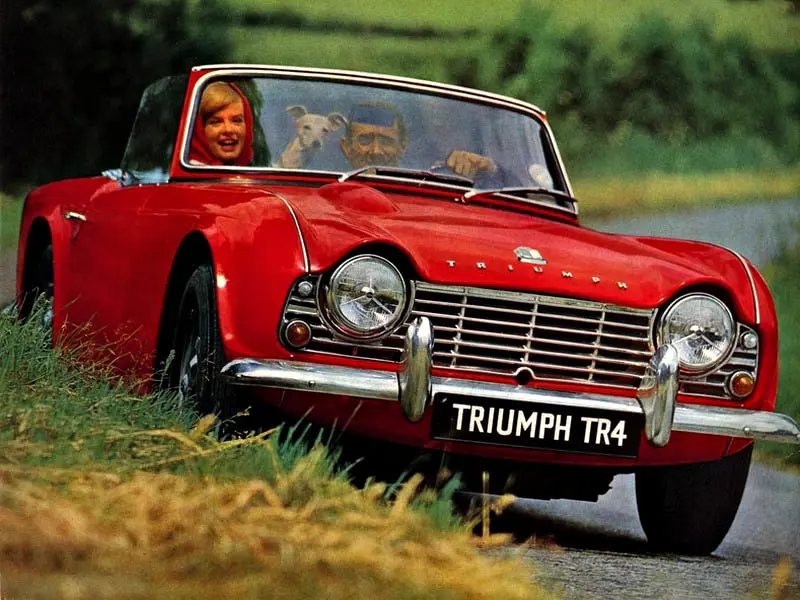60 YEARS OF THE TRIUMPH TR4
09 September 2021
60 years ago this month, Triumph unveiled a new sports car that left traditionalists aghast. It had a full-width body with vestigial tail fins, winding windows, and even fresh air vents on the facia. As an update of the T.R. formula, the 4’s debut was perfectly timed.
Compared with the outgoing TR3A, the Big Four engine was now in 2,138cc form, the 4’s chassis was modified, and the specification now included all-synchromesh transmission and 'rack & pinion' steering. In short, the TR4 offered the virtues of its predecessor combined with a smart new Italian suit courtesy of Giovanni Michelotti.

However, US dealers were so concerned that their clients would not accept the latest Triumph that Canley built a short run of the TR3B between March and October 1962. These combined surplus bodyshells with the 2.1-litre engine, catered for the American enthusiast who regarded the 4 as decadent. However, Road & Track (rather brilliantly) referred to it as a ‘resounding Triumph’.
In appearance, the T4 is best described as ‘smartly functional’. A bulge in the bonnet accommodated the twin H6 S.U. carburettors, while the grille still incorporated a starting handle bracket. The price was £1,095, although a heater cost another £11 16s and if you craved a 110 mph top speed, Laycock de Normanville overdrive on the top three gears for £61 19s 7d. Keen motorists might also invest £11 13s 4d in a set of Dunlop RS5 road speed tyres.
The TR4 came in a choice of two body styles; the Roadster with a detachable hood and a hard top with a removable metal panel between the windshield and the glass rear window frame. The latter predated the Porsche 911 Targa by five years. Behind the front seats were a parcel shelf/vestigial rear bench.
Motor Sport regarded the TR4 as ‘a sports car pure and simple, not a G.T. machine, and is intended to instil fun into your motoring rather than provide effortless long-distance travel across Europe’. Meanwhile, Autocar believed the Triumph’s ‘improved appearance and all-weather equipment' would appeal to a new generation of owners - i.e. those who did not think that open-air motoring was synonymous with discomfort.
The TR4’s profile was further raised via its use by several police forces on traffic duties, including Southend-on-Sea’s. The latter employed the Triumph in 1962 as a fast pursuit car, with special equipment including a Winkworth gong, two-note air horns, police signs fore and aft with a Stop warning on the boot, a Pye wireless set, a windscreen mounted spot lamp and a re-calibrated speedometer.
In 1965, the TR4 replaced the TR4. Its image differed from the MGB and the Sunbeam Alpine; more rugged while never crude. Triumph had cleverly updated the original TR2 formula for enthusiasts who now demanded a modicum of comfort. Or, as one advert put it: ‘If you wished that sports cars were a bit more human, the TR4 is for you.'
Why choose Lancaster Insurance?
Here at Lancaster, we love classic cars as much as you do and we understand what it takes to protect them for future generations.
We have links with some of the top classic car clubs around the country and some of our policies even offer discounts of up to 25% for club members.
Other benefits of classic car insurance through Lancaster can include:
- Historic rally cover
- Static show cover
- Limited mileage discounts
- Choice of repairer
- 24-hour claims helpline
Give your classic the protection it deserves and get a quote for your classic today.
